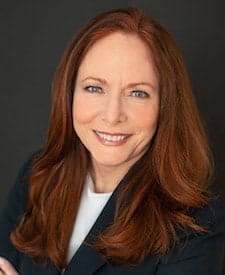
By Pamela J. Gallagher
There is reluctance in the healthcare industry to adopt new price transparency technology. Some healthcare providers are ignoring it all together, saying they’ll wait and see if anything comes of it.
But this technology isn’t “coming.” It’s already here. With the technology in place and demands for increased affordability coming from consumers and legislators alike, this technology is just one little tilt from being mainstream—and I believe that it can change the healthcare industry for the better.
Disrupting healthcare’s status quo
AnytimeDrs.com is setting itself apart from traditional healthcare by providing convenient and affordable healthcare—24/7—with a focus on prevention and wellness. Patients just pay one low, flat rate per month.
Many patients do not prioritize yearly physical exams because they find them cost-prohibitive. But if they can do them more affordably in the privacy in their own home without taking time off work or coordinating travel, that could create change in consumer behavior, and positively impact patients’ long-term health.
MDLive.com has also has an anytime-access model with doctors on call 24/7 via patients’ smartphone, tablet or computer. In addition to wellness exams, MDLive offers counseling, psychiatry, and even dermatology appointments—all remotely. Not only are patients saving time and money, but I believe services like these are an avenue to decompress urgent care facilities and emergency rooms.
MDSave.com takes a different approach to consumer-focused healthcare. Rather than connecting patients with specific doctors, the website lists different procedures, tests, screenings with the lowest price in a given area and a comparison to the national average. Patients can compare prices, buy their procedure, then schedule it at a time that is convenient for them.
Since they are paying upfront, patients know exactly how much their procedure will cost. And because hospitals are just providing the service, it reduces their administrative costs and eliminates the need to negotiate with payers.
It’s not just online tech start-ups that are embracing this technology. Doctors’ offices and clinics are beginning to offer virtual visits for certain types of appointments. This lowers costs for providers and patients, and keeps sick patients from spreading germs to healthy patients in the waiting room.
In 2019, Humana launched a pilot for a plan based on virtual primary care. Premiums for the plan are half the cost of the company’s most popular products, as a Healthcare Financial Management Association (HFMA) article reports. The key to the pilot’s success is whether employers embrace this product. For employers who are self-insured, I see products like Humana’s creating an opportunity for them to increase control of their healthcare costs. They could give out vouchers for wellness exams and designate a space in the office building for employees to have virtual doctor visits. With fewer employees needing to take sick time to visit their physician, it could take some of the unexpectedness of the cost of healthcare coverage out of the equation.
Patients as consumers, not just customers
While I believe traditional healthcare will still have a role in the future of the industry, healthcare providers have an opportunity to consider the needs of their patients as consumers.
In an article on embracing consumerism in healthcare, HFMA CEO and former Spectrum Health CFO Joe Fifer said of the healthcare industry’s reluctance to fix its price transparency problems:
“It’s not always a matter of active opposition to fixing problems; sometimes it’s apathy. Our patients are our customers, yet we don’t value them in their role as consumers.”
I agree with his statement. Patients are capable of understanding these complexities. They just need to be given reliable information upfront.
Technology and calls for price transparency are perfectly aligned to create a shift in the healthcare industry. I do not think these changes are something to resist; embracing them will offer new opportunities to provide quality, affordable care to patients.
Pamela J. Gallagher is a senior healthcare finance executive with 20 years of experience balancing the reality of finance with the delivery of excellent patient care. As a consultant she instills financial discipline, streamlines processes to maximize revenue, and reduces expenses for immediate improvements and long-term results. She writes on healthcare, finance, and technology at gallaghersresulting.com.
The Editorial Team at Healthcare Business Today is made up of skilled healthcare writers and experts, led by our managing editor, Daniel Casciato, who has over 25 years of experience in healthcare writing. Since 1998, we have produced compelling and informative content for numerous publications, establishing ourselves as a trusted resource for health and wellness information. We offer readers access to fresh health, medicine, science, and technology developments and the latest in patient news, emphasizing how these developments affect our lives.








